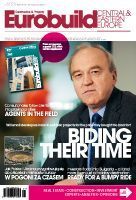Mladen Petrov An increasing number of investors is fighting for their slice of the cake on the attractive bulgarian market.But For how long will Bulgaria be able to keep its ‘great investment opportunities’ label? For many years, sunny Bulgaria was generally perceived as an attractive holiday destination for tourists on a budget. The turbulent political situation after the fall of the communist system and the wars in the former Yugoslavia slowed down the transition process. Bulgaria and Romania missed the first train to the EU in 2004, but the two neighbours finally joined the European family in 2007. Bulgaria’s entry into the EU was accompanied by an increasing interest from investors, who turned the country into a investment hot-spot. A year and a half later, this fever still hasn’t dissipated, but for how long it is going to last? Caution! Hot!The Bulgarian real estate market has not yet been significantly affected by the financial crisis on the American






























































